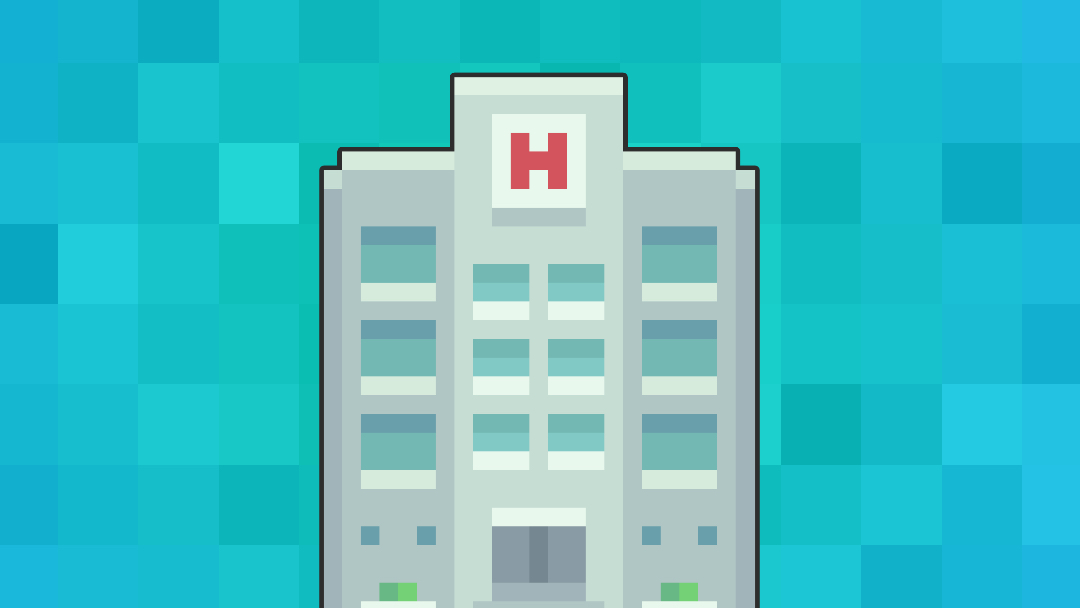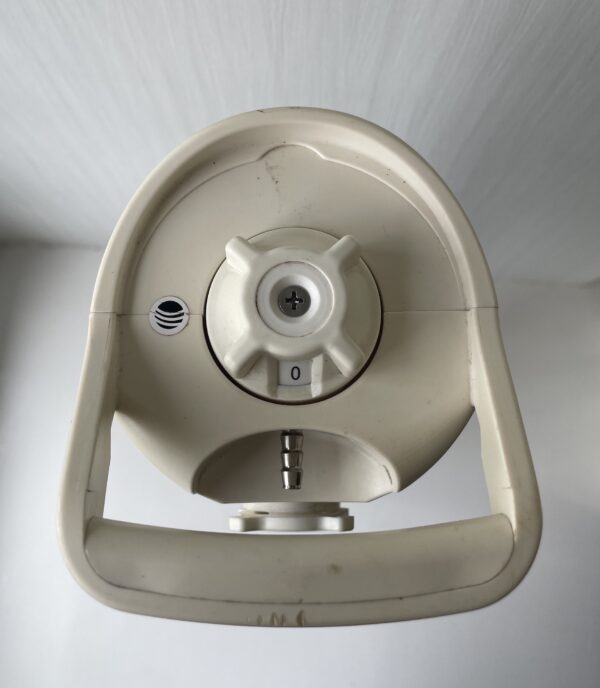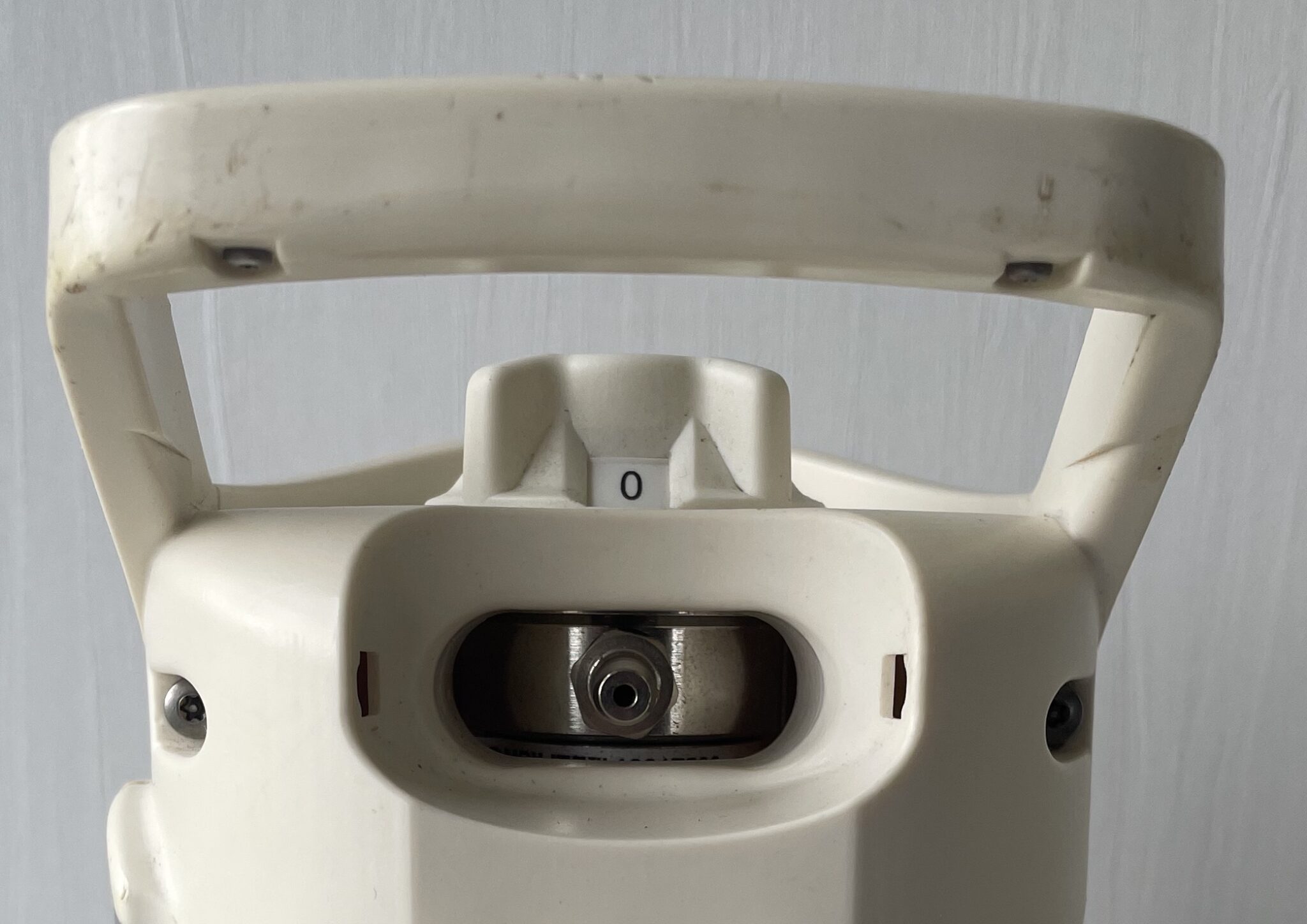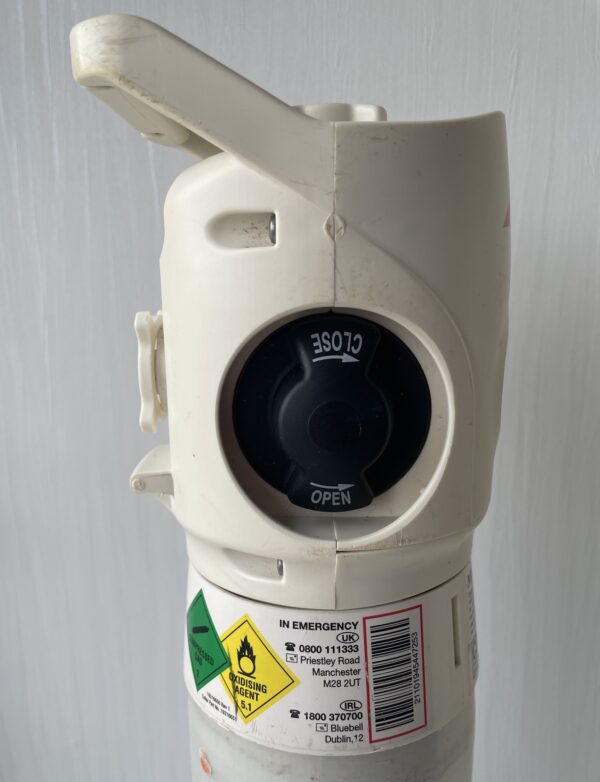- 📖 Geeky Medics OSCE Book
- ⚡ Geeky Medics Bundles
- ✨ 1300+ OSCE Stations
- ✅ OSCE Checklist PDF Booklet
- 🧠 UKMLA AKT Question Bank
- 💊 PSA Question Bank
- 💉 Clinical Skills App
- 🗂️ Flashcard Collections | OSCE, Medicine, Surgery, Anatomy
- 💬 SCA Cases for MRCGP
To be the first to know about our latest videos subscribe to our YouTube channel 🙌
This administration of oxygen guide provides a step-by-step approach to setting up and administering oxygen in an OSCE setting. Administration of oxygen may be assessed in an OSCE as an individual skill or as part of an ABCDE assessment.
Oxygen
The administration of supplemental oxygen is indicated for hypoxaemia. It is important to remember administering oxygen does not treat the underlying cause of the hypoxaemia, and a thorough clinical assessment should be performed to identify the cause.
Most hospital drug charts have a section for oxygen prescribing, including target oxygen saturations, oxygen delivery device and desired flow rate/FiO2.
For more information, see our guides to oxygen prescribing and oxygen delivery devices.
Oxygen cylinders
Oxygen cylinders are used in areas without a piped supply of oxygen (e.g. in pre-hospital settings or when transferring patients in hospital).
In the UK, BOC supplies the majority of portable oxygen cylinders. Common sizes of BOC cylinders include:
- CD (460 litres) or ZD (600 litres): a small cylinder often found in emergency bags
- HX (2300 litres) or ZX (3040 litres): a larger cylinder

These oxygen cylinders have integral valves which regulate pressure and control oxygen flow rate. Other oxygen cylinders may require a valve/flow meter to be fitted before they can be used. For more information, see the range of oxygen cylinders available from BOC.
Calculating the duration of oxygen supply
Oxygen cylinders contain a fixed amount of oxygen. Their lifespan will depend on the flow rate of oxygen being administered to the patient.
For example, a CD cylinder (containing 460L) will last approximately 30 minutes in a patient being given 15 L/min of oxygen (460/15 = 30).
It is important to know the amount of portable oxygen available when administering oxygen using a cylinder. Further oxygen cylinders may be required. In 2023, a national patient safety alert was raised due to incidents of patients coming to harm because of a lack of portable oxygen (e.g. cylinders running out or being used when empty).
Piped oxygen
Most hospitals have a medical gas pipeline system to deliver oxygen to the patient’s bedside and other clinical areas (e.g. theatres) using a wall port and oxygen flow meter.
Oxygen safety
When administering oxygen, there are several important safety considerations:
- Fire risk: although oxygen is not flammable, it is an oxidising agent and feeds a fire. In an enclosed environment, the atmospheric oxygen concentration can increase with supplemental oxygen if there is inadequate ventilation. Patients must not smoke or vape. Oxygen must not be used in an area with potential ignition sources.
- Oil/grease (portable cylinders): oil or grease-based products (including hand creams and moisturisers) must not come into contact with the cylinder due to the risk of ignition.
- Compressed gas (portable cylinders): portable oxygen cylinders contain compressed oxygen and should not be damaged or dropped. If possible, store oxygen cylinders in holders.
- Risk of running out of oxygen (portable cylinders): ensure adequate oxygen supplies are available and monitor usage, especially when transferring patients, even for short distances. Cylinders should be changed when the contents gauge reaches the red zone as the remaining volume can quickly reduce.
Gather equipment
Gather the appropriate equipment:
- Oxygen cylinder (if being used instead of a piped supply)
- Appropriate oxygen delivery device: mask, nasal cannula, nebuliser etc
- Pulse oximeter
- The patient’s oxygen prescription (in their drug chart)
Introduction
Wash your hands and don PPE if appropriate.
Introduce yourself to the patient including your name and role.
Confirm the patient’s name and date of birth.
Briefly explain what the procedure will involve using patient-friendly language: “Your oxygen levels are a little low. We want to give you oxygen through a mask to help bring them back up. The mask may make your tongue and mouth feel a little dry. We will monitor your oxygen levels throughout using a probe on your finger. In some cases, we may need to take a small sample of blood to check your oxygen levels.”
Gain consent to proceed with oxygen administration.
Choose an appropriate mask and flow rate
Check the patient’s target oxygen saturations (usually 94-98%, or 88-92% in those at risk of type 2 respiratory failure) – this may be written on their drug chart.
Choose an appropriate oxygen mask and flow rate depending on the clinical situation:
- Nasal cannulae: 2 – 4 L/min (for patients with mild hypoxaemia who only need low-flow oxygen)
- Simple face mask: 5 – 10 L/min
- Venturi mask: flow rate depends on the colour of the adaptor (for patients who require a fixed FiO2, e.g. patients with COPD)
- Non-rebreather mask: 15 L/min (for critically unwell patients)
When using a non-rebreather mask, the reservoir bag must be filled before the mask is fitted to the patient. To fill the reservoir bag, obstruct the valve with your finger until the bag is filled with oxygen.
For more information on the different oxygen masks and choosing an appropriate flow rate, see our guides to oxygen prescribing and oxygen delivery devices.
Oxygen can also be used with a bag-valve-mask (BVM) during resuscitation and ventilation. For more information, see our guide to airway equipment.
Administer oxygen
Portable cylinder
These instructions are for a BOC cylinder with an integral valve (CD/ZD/HX/ZX) commonly used in UK hospitals. Different cylinders will have different instructions, so checking and following manufacturer and local guidelines is essential. Do not use an oxygen cylinder if you have not been trained.
If possible, a portable oxygen cylinder should be set up away from the patient.
1. Ensure your hands are clean and any alcohol gel has evaporated before you handle the cylinder.
2. Check the cylinder contains oxygen (this will be marked on the cylinder) and perform a quick visual inspection to ensure that the cylinder is undamaged.
3. Check the cylinder’s expiry date and contents gauge (Figure 2). Do not use the cylinder if it has expired or is empty.
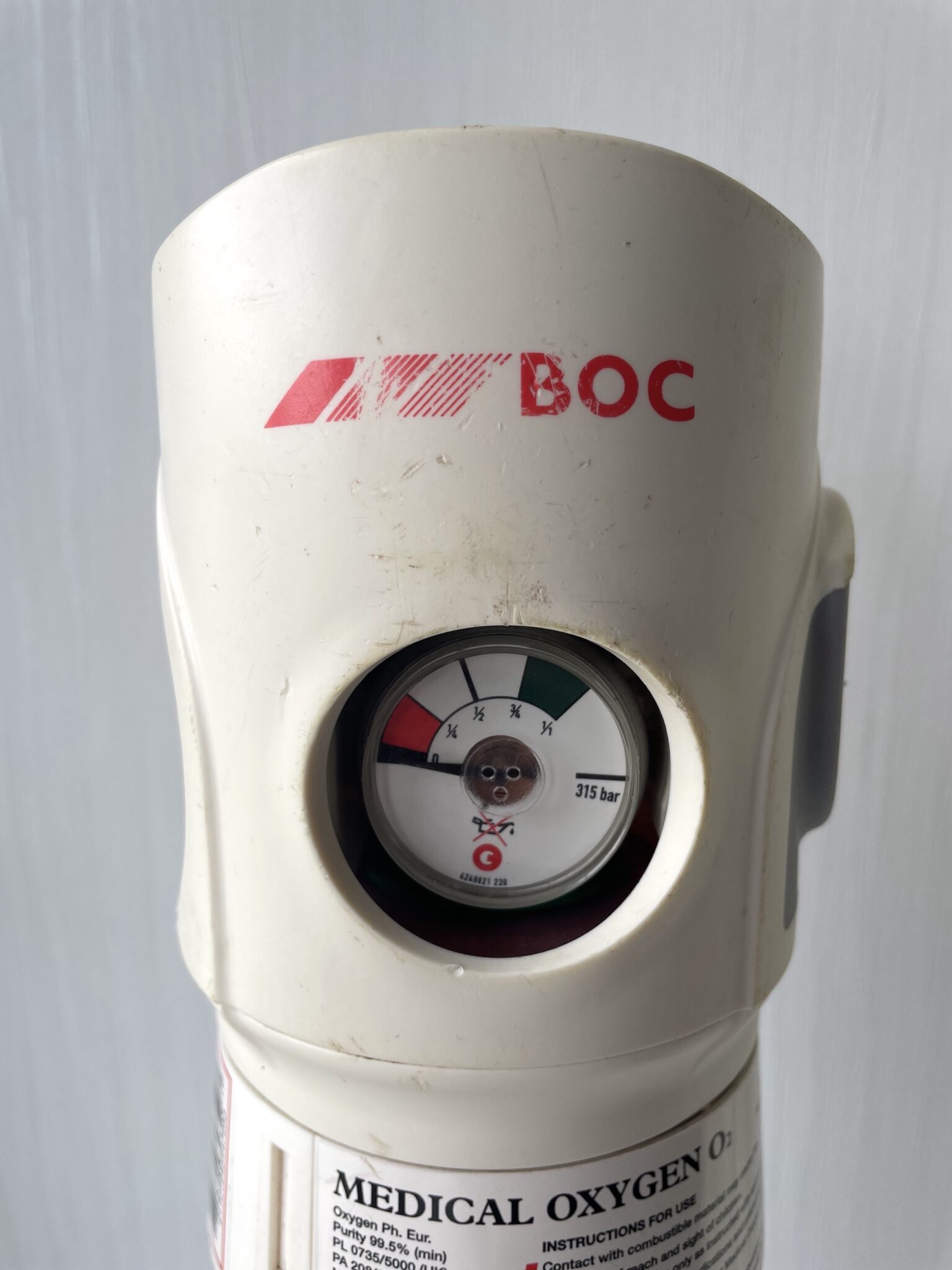
4. Check the cylinder is off (i.e. the valve is closed). To do this, use the flow rate selector (Figure 3) and select a flow rate of 5L/min – no oxygen should come out of the cylinder. Return the flow rate selector to 0.
5. Connect the oxygen tubing attached to the mask/nasal cannula to the cylinder outlet (the small metal outlet – Figure 4).
6. Slowly open the cylinder valve using the handwheel (Figure 5)
7. Select an appropriate flow rate using the flow rate selector (Figure 3)
8. Place the oxygen mask or nasal cannula on the patient
Troubleshooting
If no oxygen is being delivered to the patient, check the oxygen cylinder is switched on (using the valve in Figure 5) and that a flow rate has been selected using the flow rate selector (Figure 3). In addition, check the oxygen tubing from the cylinder to the mask, as the tubing can become dislodged, especially if the patient is moving.
Piped oxygen
In a piped oxygen system, a flow meter is attached to an oxygen wall port (Figure 6). Most flow meters use a small ball to indicate the current flow rate of oxygen.
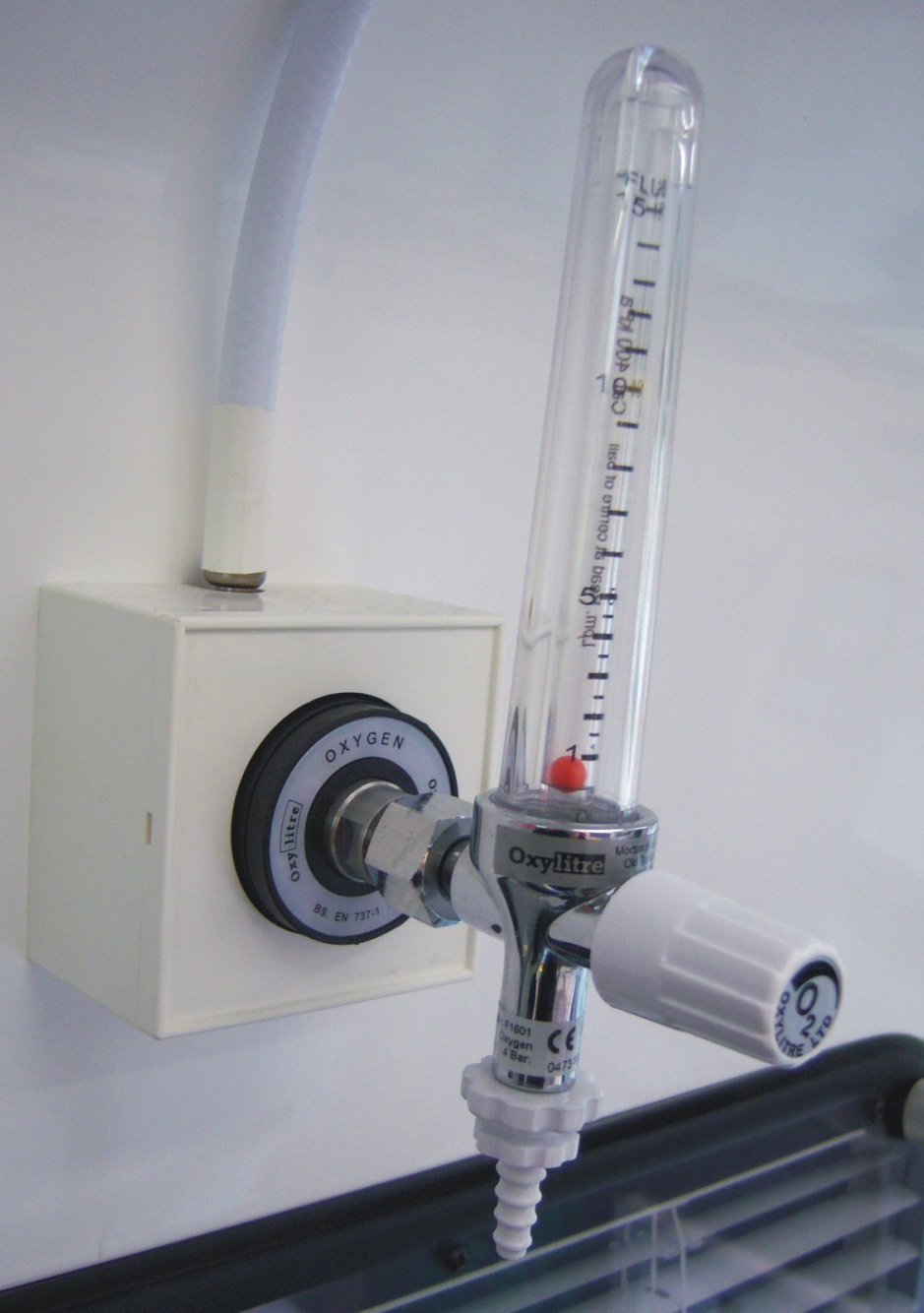
1. Connect the oxygen tubing attached to the mask/nasal cannula to the flow meter outlet.
2. Turn the valve to start the flow of oxygen, the ball will rise to indicate the current flow rate.
3. Adjust the valve until the ball is in the middle of the line of the desired flow rate (Figure 7).
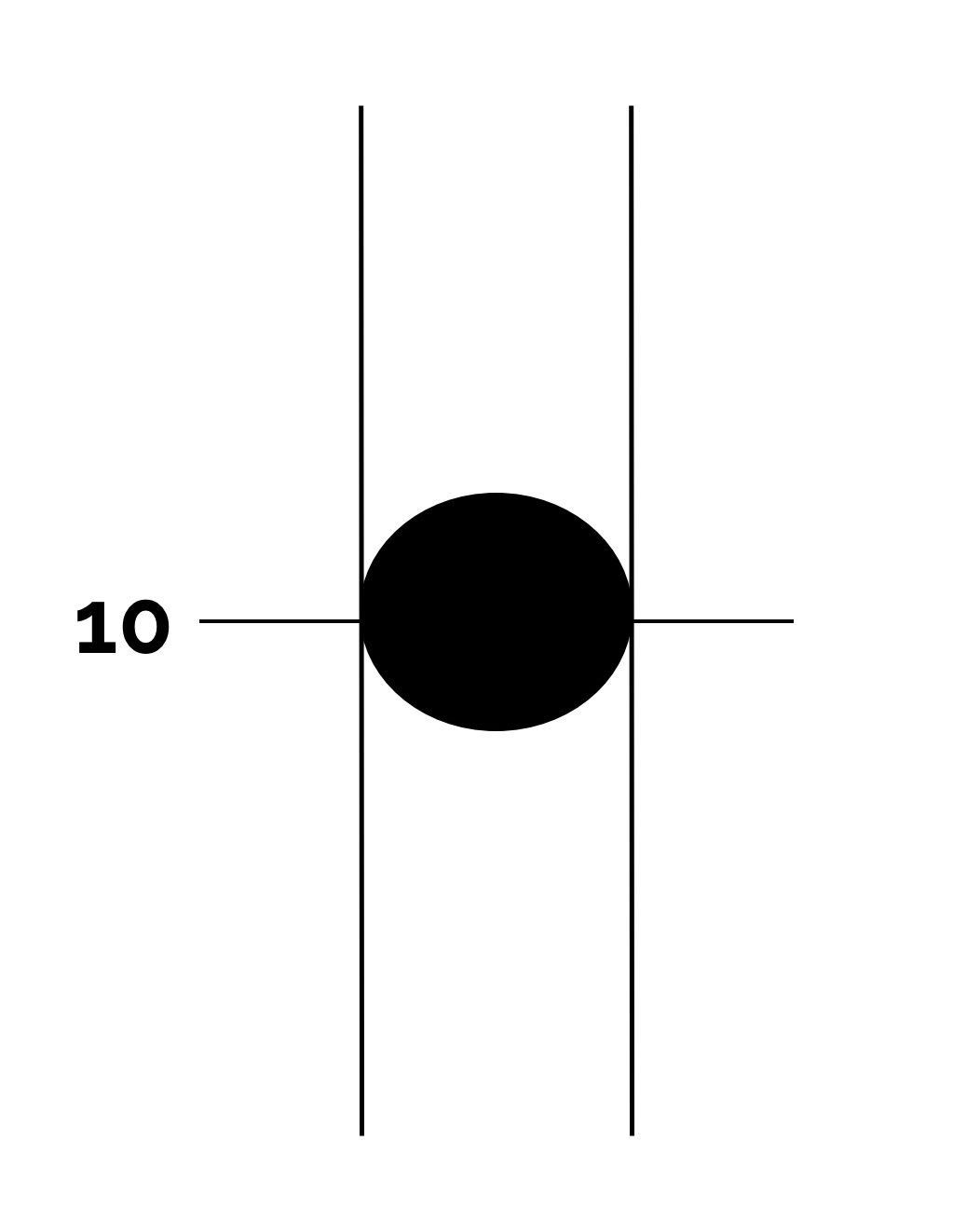
In neonatal settings, microflow meters are used, which allow for accurate low-flow rates from piped wall systems (0.1 – 1 L/min).
To complete the procedure…
Explain to the patient that oxygen is now being administered.
Monitor the patient, including oxygen saturations and arterial blood gas (if required). Titration of the flow rate or changing to a different oxygen delivery device may be required.
Dispose of PPE appropriately and wash your hands.
Document that oxygen has been administered (including indication, flow rate and device used) and complete the oxygen prescription chart.
Reviewers
Dr Sachin Ananth
Internal Medicine Trainee and Lead Respiratory Author at Geeky Medics
Emma Readfearn & Amanda Everitt-Duxbury
Clinical & Workplace Based Facilitators
School of Medicine, University of Central Lancashire
References
- NHS England. National Patient Safety Alert – Use of oxygen cylinders where patients do not have access to medical gas pipeline systems. Published in 2023. Available from: [LINK]
- O’Driscoll BR et al. BTS guideline for oxygen use in adults in healthcare and emergency settings. Thorax. Published in 2017. Available from: [LINK]
- BOC. Medical Oxygen Integral Valve Cylinders Instructions for Use. Available from: [LINK]
Image references
- Figure 6. Owain Davies. Oxygen piping and regulator on the wall of an ambulance. License: [CC BY]


